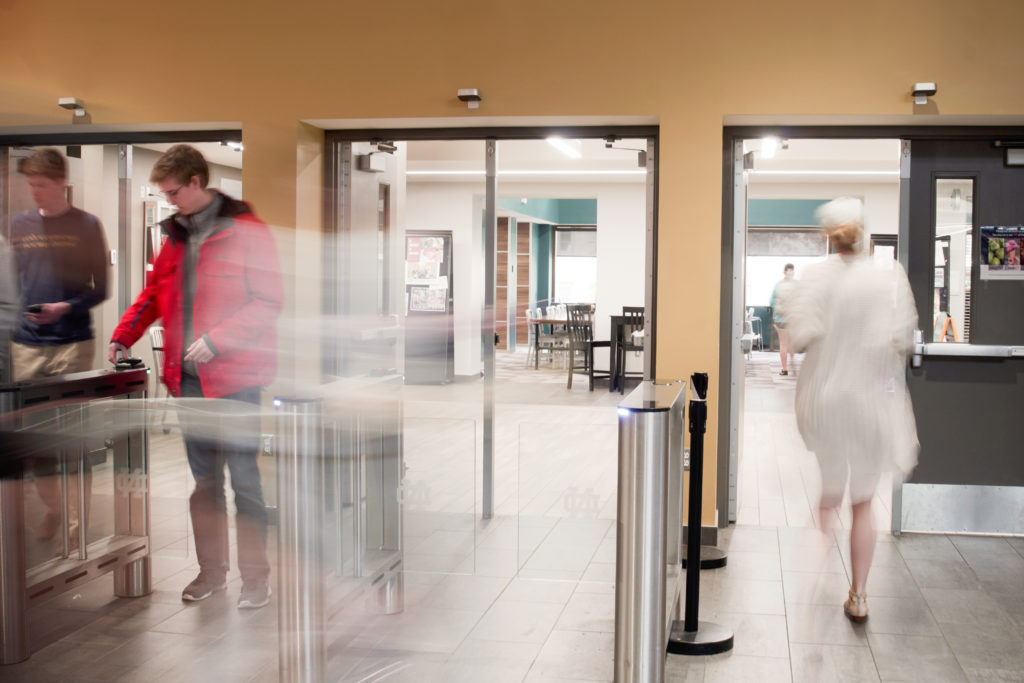Returning to Campus with Density
Posted 5 years ago by Switched On Space
COVID-19 has highlighted the delicate balance between protecting student health through remote learning and providing an effective curriculum in a virtual classroom. Internet connectivity issues, constant distractions, and a lack of direct supervision can all hinder a student’s ability to succeed. As such, teachers and students (and parents) are particularly keen on returning to university and getting back to work.
But in order to do this, there are a slew of safety issues that need to be addressed before schools can ensure the continued health and well-being of students and faculty. Capacity requirements, cleaning schedules, and university-family relations are all key considerations that institutions have to define before bringing students back.
Safe by Density provides schools with the real-time data they need to protect their community. Displays, Alerts, and public web-links offer students and faculty the ability to choose when to visit busy areas like cafeterias, libraries, and bookstores. Safe Analytics enables staff to streamline cleaning services based on actual usage. These metrics help maintain social distancing at universities, avoid exceeding capacity limits in high-density areas, and reassure families that all safety precautions are being taken to keep their students healthy.
Hotspot monitoring
High-density areas such as cafeterias, libraries, and gyms present a much higher risk for viral transmission because of constant student foot traffic. By using Safe by Density, university staff and students can monitor the number of individuals in each of these ‘hotspots.’ Students can rely on accurate, real-time occupancy metrics to avoid crowded areas and navigate university campus safely.
For example, many universities have two or more cafeterias in order to provide efficient meal-access for students on different sides of campus. Safe by Density allows those schools to set capacity limits on each cafeteria and disseminate that information to students. Then, students can decide which cafeteria is less crowded before they leave their dorm or study space, thereby saving time avoiding long lines and keeping themselves away from large groups where COVID-19 will have a better opportunity to spread between people.
“My friends and I have talked about how crowded the cafeteria gets right after class. I spend so much time just waiting to get in, I could be more productive during that time.”
– Danielle Galvao, Computer Science major at Notre Dame

Usage-based cleaning
The majority of universities subscribe to hourly or timed cleaning schedules. While these can be effective in predicting when large rushes of students visit certain facilities, like cafeterias or study halls, there are many circumstances when those schedules are too rigid to provide adequate cleaning services in changing environments that need immediate attention. Increased sanitation efforts will put a strain on maintenance and cleaning crews if they’re left to guess which university buildings need the most attention and how often.
Safe by Density equips university staff and cleaning staff with the tools to track and analyse the actual usage of facilities. Being able to accurately monitor when a high volume of students visit certain facilities enables universities to streamline staffing schedules and avoid cleaning areas that have been unused. A university’s facilities management is crucial to the continued health and wellness of students and faculty, and this data helps them organise their efforts more effectively.
University-family relations
When it comes to universities reopening, families are naturally (and rightfully) concerned about their student’s health and safety. It’s important to recognise that because universities are central locations hosting thousands of people from all over the world, they inherently present an elevated risk of viral transmission. As such, many families are reluctant to send their children back, especially if the university isn’t implementing every possible precaution to navigate the risk. By integrating Safe by Density with university student portals, both parents and students can monitor the capacity of busy areas. This enables students to make informed decisions about where to spend their time, and it provides parents the opportunity to check on how the university is keeping up with the busyness of a new term/semester.
As a college student, having a system like Safe by Density implemented would give peace of mind. It would show that my university is taking the necessary precautions to offer the college experience I deserve, while still ensuring that I have the tools to safely navigate my campus. Knowing that public spaces are being consistently monitored and sanitised would help me feel more comfortable visiting my whole university campus and not just hiding out in my room. We’re not sure what “normal” will look like after COVID, but systems like Safe by Density can grant students the opportunity to get back to university and focus on what we’re there to do: learn.
Spread the word
Comments? Questions? Connect with Switched On Space.